Sensor Signal Conditioning
What is a signal conditioner?
A signal conditioner is a device that converts one type of electronic signal into a another type of signal. Its primary use is to convert a signal that may be difficult to read by conventional instrumentation into a more easily read format. In performing this conversion a number of functions may take place. They include:
Amplification
When a signal is amplified, the overall magnitude of the signal is increased. Converting a 0-10mV signal to a 0-10V signal is an example of amplification.
Electrical Isolation
Electrical isolation breaks the galvanic path between the input and output signal. That is, there is no physical wiring between the input and output. The input is normally tranferred to the output by converting it to an optical or magnetic signal then it is reconstructed on the output. By breaking the galvanic path between input and output, unwanted signals on the input line are prevented from passing through to the output. Isolation is required when a measurement must be made on a surface with a voltage potential far above ground. Isolation is also used to prevent ground loops.
Linearization
Converting a non-linear input signal to a linear output signal. This is common for thermocouple signals.
Used for thermocouples. The thermocouple signal is adjusted for fluctuations in room temperature.
Excitation
Many sensors require some form of excitation for them to operate. Strain gages and RTDs are two common examples.
Choose the right signal conditioner for your application
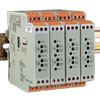 DIN Rail Mount
DIN Rail Mount
As the name implies, a DIN rail mount signal conditioner mounts on a DIN rail bracket. DIN rail conditioners are very popular in industrial applications since they provide a rugged mounting format for either a few or a large number of sensor signal conditioners.
 Backplane Mount Conditioners
Backplane Mount Conditioners
Certain sensor signal conditioners can also be mounted on a common backplane. The backplane style provides the advantage of all output signals being accessible through a single common connnector. The backplane style signal conditioners are often used with data acquisition systems since a single cable can connect multiple conditioners to a data acquisiton device.
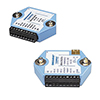 Digital Sensor Signal Conditioners
Digital Sensor Signal Conditioners
Digital conditioners are one of the more recent developments in signal conditioners. The output of a digital signal conditioner is converted to a digital format such as RS232, RS485 or even Ethernet. Digital signals have several advantages over analog signals. They provide a high degree of immunity from electrical noise, they can also support extended transmission distances and are easily connected to a computer. With an ethernet output, the input signal can be read across an entire network or even across the internet if so configured.
Signal Conditioners | Related Products
↓ View this page in another language or region ↓
 CLOSE
CLOSE




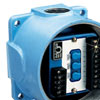
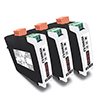
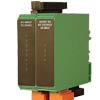
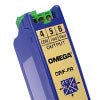
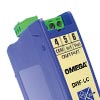
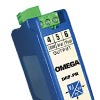

 Condicionadores de Sinais
Condicionadores de Sinais Conditionneurs de Signal
Conditionneurs de Signal Acondicionadores de Señales
Acondicionadores de Señales Acondicionadores de Señales
Acondicionadores de Señales Signal Conditioners
Signal Conditioners Signalindlæring
Signalindlæring Conditionneurs de Signal
Conditionneurs de Signal Signalumformern
Signalumformern Signal Conditioners
Signal Conditioners Condizionatori di Segnales
Condizionatori di Segnales Acondicionadores de Señal
Acondicionadores de Señal Signal Conditioning
Signal Conditioning Signal Conditioners
Signal Conditioners Signal Conditioners
Signal Conditioners
 シグナルコンディショナー
シグナルコンディショナー 신호변환기
신호변환기 Signal Conditioners
Signal Conditioners
 Signal Conditioners
Signal Conditioners
 Signal Conditioners
Signal Conditioners
 Signal Conditioners
Signal Conditioners
 Signal Conditioners
Signal Conditioners